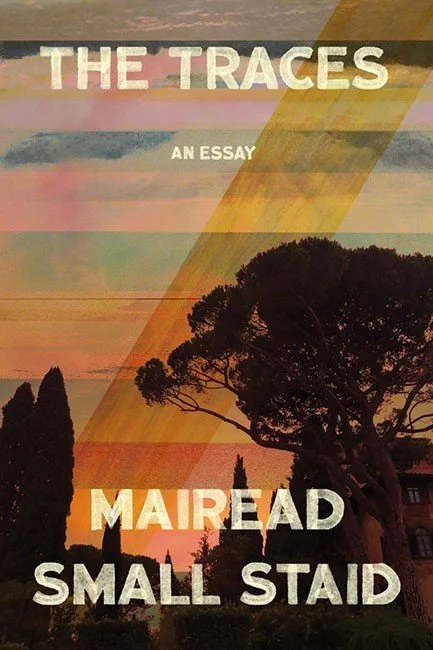Rupert Loydell Reviews 'The Traces: An Essay' by Miread Small Staid
Miread Small Staid's book is the kind of writing the term 'Creative Non-Fiction' was invented for. It is a travelogue, a memoir, a romance, critical literary exposition, art history, and a quest, all in one. It meanders, branches, follows its own diversions, conversing amiably with the reader as it reflects on time, memory and place, looking for and considering the nature of that most elusive of human conditions, happiness.
Staid's book is ostensibly about a period of time spent studying in Florence, her friends there (one, Z, who she lusts after, flirts with and eventually beds), Italian art, architecture and culture, and trips from there to elsewhere in Europe, Venice and Paris included. It is also a commentary on Renaissance painting, and books, especially Italo Calvino's Invisible Cities, the novel where Marco Polo invents or describes cities that turn out to be variations on Venice itself. Sappho, Anne Carson, Montaigne, Michelangelo, Cesare Pavese, Alain de Botton, Carlo Rovelli, Lyn Hejinian, and a host of others are also referenced, as is another book of Calvino's, Six Memos for the Next Millennium.
This isn't an academic treatise though, it's a personal consideration of how physical distance and memory allow revision, nostalgia and reflection, which is one of the ways happiness arrives. Staid is aware of how happiness is often experienced in the past, not in the moment; and this fascinates her, even as she openly undercuts her own narrative by revealing her European travels happened a decade ago. She understands we are getting a mediated and self-edited version of her idyllic summer and love affair, not to mention a version now underpinned and annotated by philosophy and art history.
To be fair, the art history seems to be mostly contemporaneous to the trip, and often includes her art lecturer's comments, and she also appears to have been engaged with some of the books she uses at the time, as well as her notebooks and journal. Despite all this, The Traces remains what Kubla Khan, in Invisible Cities, calls 'a journey through memory' – a quote Staid uses in her discussion, briefly before highlighting another pertinent statement from the same book: '[A]ny totality that is not potential, speculative, or plural is no longer thinkable.'
Invisible Cities is full of descriptions of the same city from different points of view, different understandings of function, different focal points and ideals, something the emperor of the book and the reader only come to realise as the book proceeds. Staid has written her book in the full knowledge that she is only telling one story, or a number of stories as she interprets her friendships, her learning, her reading, travels and desire, through the lenses of time and other texts. She is constantly 'gesturing towards some unknown', suggesting that '[w]e hold so many different selves within' but that she still wants more.
So, this is a book of possible stories told by only one, or a few, possible selves. It knowingly grapples with layers of possible, selective and selected narratives, filtered through experience and desperate to define and pin down happiness. It takes a long time for the author of this book to realise happiness is elusive: '[e]very time I set out, I end up back where I began', she closes a focussed discussion of happiness towards the end of the book. 'This written account [...] can never be equivalent to the lived experience nor even the lesser recollection, but it can make up for its deficiencies in other ways: art, insight, a belated and lasting surprise', she notes earlier, although this book is not deficient in any way.
It is the written equivalent of those magicians who reveal how the trick they have just performed is done: the illusion is still just as amazing even if we have been shown the mechanics of it all. The Traces tells and deconstructs a complex story of one person's happiness, woven from all sorts of creative material. It is one of the most inventive essays and best books I have ever read. In part of her discussion of how we long for 'elsewhere and elswhen', Staid poses the question '[i]s this an answer or a question?', answering herself a few lines later: 'Like a long glance, like a kiss, they ask and answer all at once.' In a similar manner, this wonderful book offers both questions and answers, prompting us to think and enquire for ourselves.
Words by Rupert Loydell

